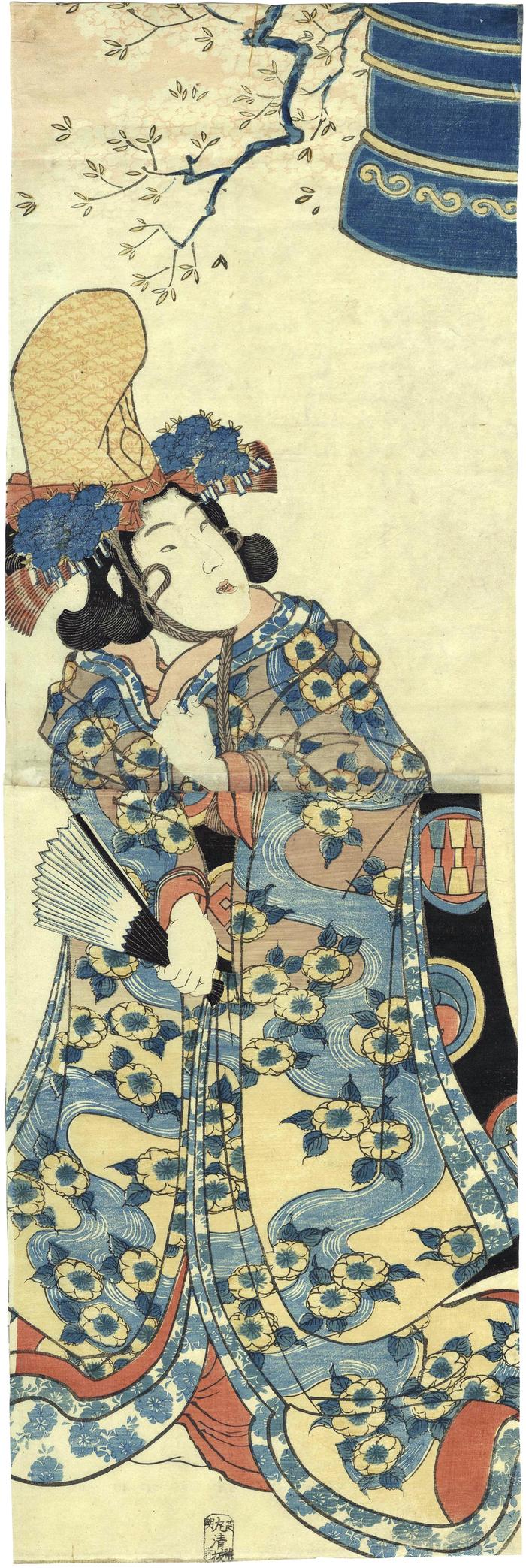Utagawa Kunisada (歌川国貞) / Toyokuni III (三代豊国) (artist 1786 – 01/12/1865)
Dōjōji Maiden (Musume Dōjōji - 道成寺) dressed as a traditional shirabyoshi (白拍子)
early 1830s - early 1840s
8.75 in x 26.25 in (Overall dimensions) Japanese woodblock print
Publisher: Maruya Seijirō (Marks 299 - seal 27-010)
Honolulu Museum of Art
Library of Congress
Barry Rosensteel Japanese Print Collection, U. of Pittsburgh This copy has been trimmed on the left where the signature, ōju Kōchōrō Kunisada ga, appeared (應需香朝楼国貞画).
****
Roger Keyes in his description of a print of Kiyohime in his 1982 doctoral thesis gives some of the background to this sad and frightening tale. "Every year a monk named Anchin from Dōjō Temple visited the village of Masago on his annual pilgrimage to Kumano. At the inn where he stayed, the innkeeper's daughter, Kiyohime, fell in love with him. As a monk, Anchin could not marry, but Kiyohime would not accept this. He retreated to his temple on the banks of the Hidaka River, and she followed in pursuit. When she reached the river, it was flooded, and the ferryboat was on the other side. Nevertheless, she flung herself into the water; her passion and jealousy were so great that she began to change into a serpent and arrived safely on the other side. In the end, Anchin hid himself inside the great temple bell, but Kiyohime, completely transformed into a serpent and furious over his refection of her love, surrounded the bell with her coils. She melted the bell with the heat of her anger and the priest died.
This tenth-century story reportedly was recorded by the Emperor Go-Komatsu (1377-1433) and was the basis for the Noh play Dōjōji."
Maruya Seijirō (丸屋清次郎) (publisher)
